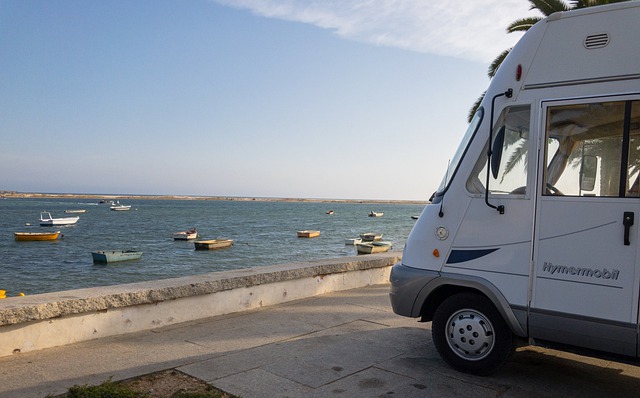
What are the most common problems with RVs?
cannon
- 0
Introduction
RVs are a great way to see the country, but they’re not perfect. They can break down, develop problems with their systems, and require repairs just like any other piece of home or personal property. However, RVers often have to wait for repairs because many shops aren’t equipped to handle them and some repairmen don’t specialize in these vehicles. Here are some common things that go wrong with RVs:
Roof leaks
Roof leaks are a common problem in older RVs, but they can be easily repaired. The most likely cause of a roof leak is a worn seal or bad gasket. Replacing the seal or gasket will fix the problem, but it’s important to check your roof regularly for leaks so you can catch them before they become serious problems.
In addition to checking for leaks, it’s a good idea to keep an eye on the roof seams that run around the perimeter of your RV. These are typically made up of a series of small strips of metal or rubber that fit together tightly, forming a waterproof seal.
Poor insulation
To have a comfortable, cost-effective RV, it’s important to make sure that you are using your RV correctly. One of the most common problems with RVs is poor insulation. Insulation is important because it keeps the inside temperature of your RV stable and therefore helps save energy. If you properly insulate all areas of your RV, you will be able to keep costs low and stay comfortable during those long road trips!
What can be done about this problem? There are several ways that this problem can be addressed:
- Insulating the walls, ceiling and floor with thick foam will help keep energy in by preventing heat from escaping through these areas.
- Adding insulation to the roof will also help keep out heat from escaping through there as well.
- Adding insulation on windows allows for more light into an area but also helps prevent any unwanted noise from coming in or going out via window openings
Slideout leaks
Slideout leaks can be caused by a variety of things, including water infiltration and corrosion. They can also damage the RV or its slideout itself, which is why it’s important to find the source of any leak and repair it as soon as possible.
Slideout leaks aren’t limited to just slides—they may also affect other parts of your RV’s exterior, including roof vents and soffits. Luckily, there’s no shortage of DIY tutorials available online that’ll help you identify where exactly your slideout problems are coming from so you can address them head-on with confidence.
Breaking down on the road
RVs are designed to be tough and durable, but no vehicle is immune to breakdowns. RVs break down for several reasons, including:
- Lack of regular maintenance. You should have your RV inspected regularly by a certified mechanic who knows the ins and outs of RVs. You can also do simple things like keeping an eye on the tire pressure and making sure that your belts are in good shape. Taking care of these small details will help you avoid big problems later on down the road!
- Road conditions. While most vehicles can handle normal road conditions fairly easily, RVs may have trouble with more severe conditions that put extra stress on engines and other components of the vehicle (like driving through deep snow). If you know that there will be rough roads ahead, make sure that you have all necessary equipment before heading out!
If you’re worried about breaking down while traveling with your family or friends this summer then keep these tips in mind: Be prepared before leaving home; make sure everyone knows how to change a tire (or replace one if needed); have an emergency kit fully stocked with everything needed for roadside assistance; always carry cellphones/cameras so you can document any damage done during emergencies without worrying about losing important information when power fails again later; remember where all keys are located so there’s no fumbling around trying figure out where they might’ve gotten lost while searching blindly through dark rooms full of clutter after everything else has been destroyed by fire just after getting settled into bed because the electricity went out due a problem.
Tire blowouts
Tire blowouts are the most common problem for RVs, with over 50% of all accidents involving them. To avoid tire blowouts:
- Replace your tires regularly. A good rule of thumb is every 3-5 years, but this can vary depending on how many miles you drive and how much weight is being carried.
- Inflate properly. If a tire has less air than it should have, it’s more likely to pop while driving down the road or even sitting still in your driveway (yikes!). Make sure you’re checking your tires often and keeping track of when they need replacing (we recommend using our handy Tire Replacement Calculator). We also recommend investing in an automatic tire pressure monitoring system so that any issues can be caught before they become problems!
- Balance your tires regularly (every oil change). Having balanced wheels means that all four parts are equally weighted and won’t slip off while driving or sitting still on a dusty road—not ideal when you’re trying not to lose control and get into an accident! Here’s more info about balancing wheels: https://www.nextlevelrvliving.com/blogs/news/why-you-should-balance-your-tires
Electrical problems
Electrical problems are the most common issue with RVs, so it’s important to know how to test your RV’s electrical system and what can cause electrical problems.
To test your RV’s electrical system, you can use a multimeter or a clamp-on ammeter if you have one. If you don’t have either of those tools, there are more affordable options available online that are based on similar technology used in professional equipment. They include:
- MultiMeter by TAO: $50-$100
- Amprobe AM2102 Digital Multimeter: $20-$30
If you want to be able to use these devices in the future when diagnosing other problems with your RV or car (or other mechanical items), consider getting an inexpensive soldering iron too (around $15). This will allow you to replace small parts like fuses yourself instead of having to pay someone else to do it for you (which could cost hundreds of dollars).
Sewage issues
Sewage issues are common in RVs. Clogged pipes, leaks, and overflow can be caused by several things:
- Frozen sewage tanks. When temperatures drop below freezing, water inside your RV’s septic tank freezes and expands, causing cracks or other damage that prevents it from holding any more waste. That means when you flush your toilet, the toilet will fill up with “black water” sewage rather than clear running water after it leaves the toilet bowl (this is called back-siphonage). To prevent this problem from occurring in freezing temperatures, add antifreeze to your black tank; consult with an RV dealer for help finding the right type of antifreeze for your system.
- Overfilling of a septic tank. Depending on how many people live in the RV and how often they use the bathroom—and if they’re using portable toilets while traveling—it’s possible that excess waste could fill up an underused sewage tank within a few days’ time without anyone noticing until it starts spilling out into another part of their rig! Make sure everyone who travels with you knows where all portable toilets are located so no one accidentally uses them instead of flushing down their own gray/black tanks regularly (since both types use different methods)
Water damage
Water damage can be the most dangerous problem for you and your RV. Water damage can lead to mold, structural damage, electrical problems, mechanical problems, and health problems. The longer you wait to get the water out of your RV the worse it will be for everyone involved.
Mold is a big concern because it can cause breathing issues and other health complications. Structural damage may become apparent with signs such as doors not closing properly or cabinets that won’t open fully anymore due to warping wood underneath them from prolonged exposure to moisture in an enclosed space like an RV (or house). Electrical problems might include lights going dimmer than usual or flickering on/off unexpectedly — these are warning signs that there may have been some kind of leak somewhere inside your motor home which caused electrical wiring insulation material around wires within walls to deteriorate over time due to exposure with water leaking into wall cavities during heavy rains while parked outdoors unattended during off-season months when no one lives inside their recreational vehicle full-time anymore…
RVs suffer from the same kinds of problems as homes, and some of them can be expensive to repair.
RVs, like homes, have a variety of complex systems that need to be maintained. If you don’t maintain your RV regularly—and even if you do—there are bound to be some problems. Different parts of the RV can experience wear and tear at different rates.
While some issues with your RV might require professional help (for example, if something breaks down completely), there are many things that you can do yourself. Regular maintenance will save money on future repairs and prevent small issues from becoming big ones.
Conclusion
As you can see, there are a lot of things that can go wrong with an RV. But you don’t have to be afraid.
Related
Post Disclaimer
The information contained in this post is for general information purposes only. The information is provided by me and while we endeavor to keep the information up to date and correct, we make no representations or warranties of any kind, express or implied, about the completeness, accuracy, reliability, suitability or availability with respect to the website or the information, products, services, or related graphics contained on the post for any purpose.

